Sudoku has remained one of the most beloved logic puzzles worldwide, captivating players with its elegant simplicity and deep strategic possibilities. While the classic 9×9 grid remains popular, numerous variants have emerged over the years, each adding unique twists and challenges to test your logical thinking.
As we enter 2025, let’s explore some of the most exciting top Sudoku variants that can sharpen your mind and elevate your puzzle-solving skills.
Top Sudoku Variants List in 2025
Sudoku variants offer a refreshing way to unplug and engage our minds. These creative twists on the classic 9×9 grid—Killer Sudoku, Samurai Sudoku, Hyper Sudoku (Windoku), X-Sudoku (Diagonal Sudoku), Jigsaw Sudoku (Irregular Sudoku), Thermo Sudoku, and Palindrome Sudoku—add layers of complexity and fun, transforming a familiar game into a thrilling mental adventure.
Whether it’s the arithmetic challenge of Killer Sudoku’s cages, the multi-grid epic of Samurai, or the symmetrical elegance of Palindrome Sudoku, each variant brings a unique flavor to test your logic, patience, and creativity. Perfect for both seasoned puzzlers and curious newcomers, these variants promise hours of brain-teasing delight. In this list, we’ll dive into the rules, appeal and personal experiences with each variant, offering tips to get you started.
1. Killer Sudoku: The Arithmetic Adventure
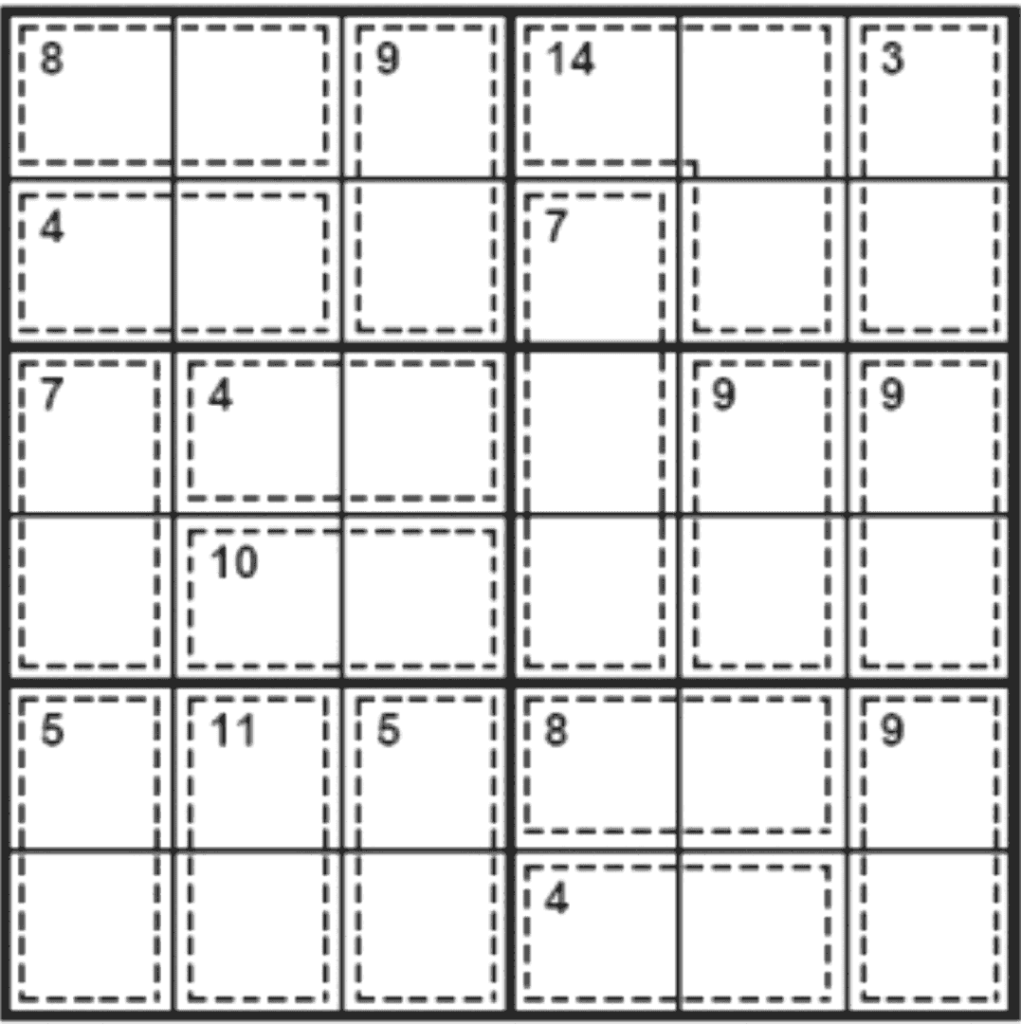
Killer Sudoku is like the lovechild of Sudoku and a math quiz, combining the familiar 9×9 grid with a cunning arithmetic twist. Instead of starting with a smattering of given numbers, you’re presented with a grid adorned with outlined “cages”—groups of cells with a sum requirement. The goal? Fill the grid so that each row, column, and 3×3 box contains the digits 1–9 without repetition, while ensuring the numbers in each cage add up to the given total.
Rules
- Standard Sudoku rules apply: No repeated numbers (1–9) in any row, column, or 3×3 box.
- Cage sums: The numbers in each cage (outlined groups of cells) must sum to the number shown in the cage.
- No repeated digits in cages: Each cage must contain unique digits.
Why Play?
Killer Sudoku is a mental workout that marries logical deduction with number-crunching prowess. It’s not just about placing digits but also figuring out which combinations of numbers can satisfy the cage sums. For example, a cage with a sum of 10 spanning two cells could be 1+9, 2+8, 3+7, or 4+6—but you’ll need to consider the surrounding grid to narrow it down. This variant sharpens your arithmetic skills while keeping the core Sudoku logic intact, making it a perfect choice for those who love a multi-layered challenge.
My Experience
The first time I tackled a Killer Sudoku, I felt like I was solving a puzzle within a puzzle. The cage sums threw me off at first—I kept trying to brute-force combinations until I realized the beauty lies in the interplay between the cages and the grid. It’s like a dance where every step (or digit) has to align perfectly. If you’re new to it, start with smaller cages (like sums of 3 or 4) to get a feel for the logic. Trust me, the “aha!” moment when a tricky cage clicks into place is incredibly satisfying.
2. Samurai Sudoku: The Multi-Grid Marathon
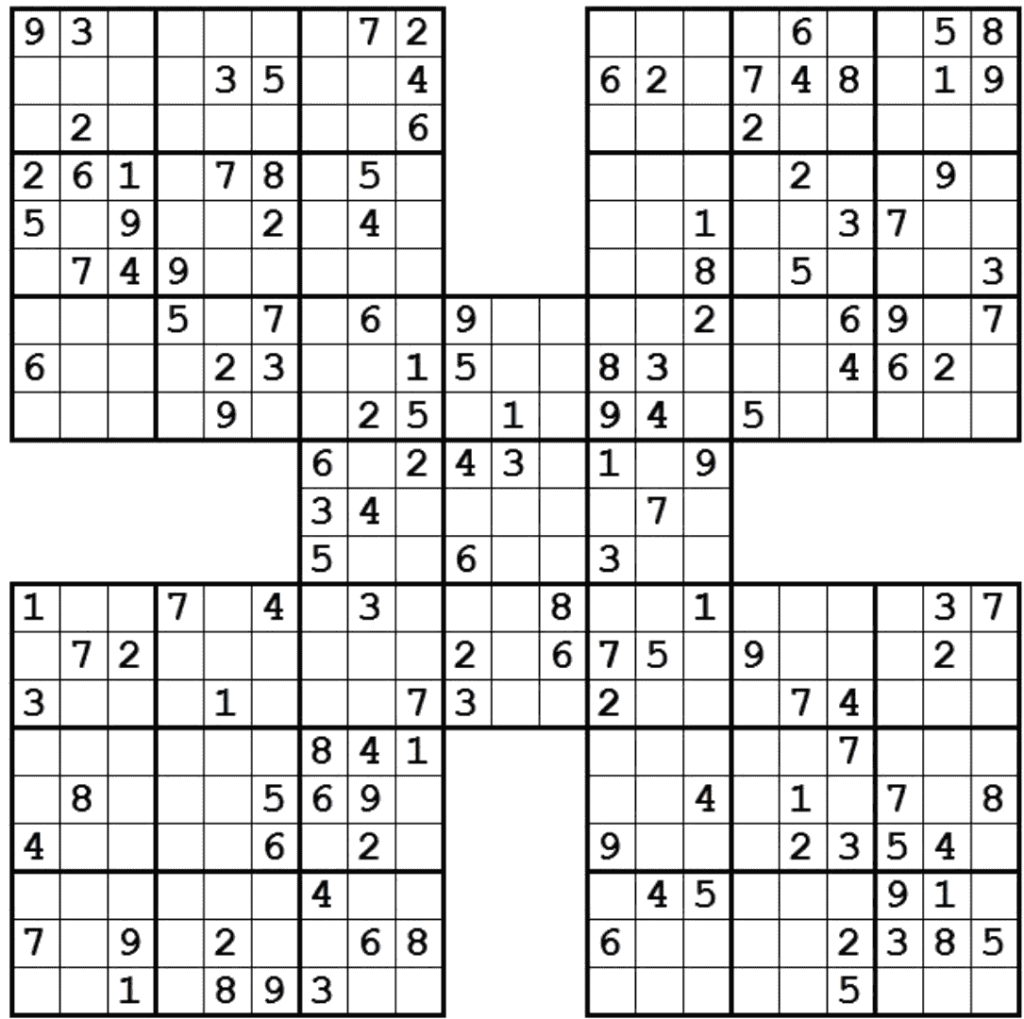
If one Sudoku grid feels like a sprint, Samurai Sudoku is a full-on marathon. This variant takes the classic 9×9 grid Facetgrid and stacks five of them together, with their central 3×3 boxes overlapping to form a cross-like pattern. Your mission is to solve all five grids simultaneously, ensuring each one adheres to standard Sudoku rules while accounting for the shared cells in the overlapping regions.
Rules
- Standard Sudoku rules apply: Each of the five 9×9 grids must have no repeated digits (1–9) in any row, column, or 3×3 box.
- Overlapping regions: The central 3×3 boxes shared between grids must be consistent across all connected puzzles.
- Solve as one: All five grids must be completed together, respecting the shared cells.
Why Play?
Samurai Sudoku is a beast of a puzzle, offering a grand-scale challenge that tests your endurance and spatial reasoning. The overlapping grids mean you’re juggling multiple puzzles at once, forcing you to think globally while solving locally. It’s a fantastic way to stretch your brain, improve pattern recognition, and revel in the sheer scale of the puzzle. Plus, finishing a Samurai Sudoku feels like conquering a mountain—exhilarating and rewarding.
My Experience
I’ll be honest: my first Samurai Sudoku intimidated me. The sheer size of the grid—five puzzles in one?—felt overwhelming. But once I started treating it like a series of interconnected mini-puzzles, it became addictive. The key is to focus on the central grid first, as it influences the others, and then work outward. It’s a long game, so I recommend setting aside an afternoon with some snacks and music. The sense of accomplishment when you fill in that final digit is unmatched.
3. Hyper Sudoku (Windoku): The Four-Region Puzzle
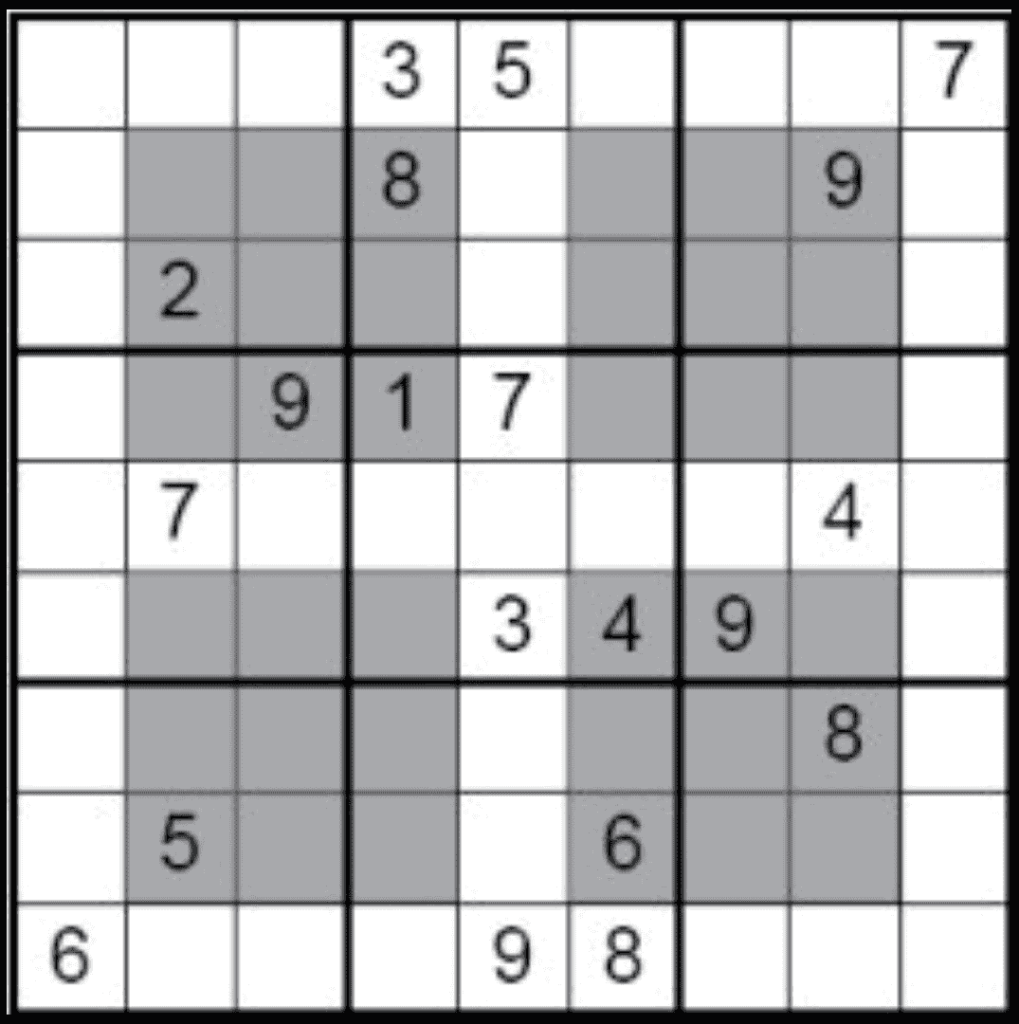
Hyper Sudoku, often called Windoku, adds a subtle yet devilish twist to the classic game by introducing four additional 3×3 regions on the grid. These extra regions, typically located at the corners or in a cross pattern, must also contain the digits 1–9 without repetition, on top of the standard row, column, and box constraints.
Rules
- Standard Sudoku rules apply: No repeated digits (1–9) in any row, column, or 3×3 box.
- Extra regions: Four additional 3×3 regions (often non-overlapping) must each contain unique digits 1–9.
Why Play?
Hyper Sudoku is a fantastic middle ground for those who find classic Sudoku too easy but aren’t ready for the complexity of Samurai or Killer. The extra regions add just enough spice to keep you on your toes, requiring you to track more constraints without overwhelming you. It’s a great way to hone your ability to juggle multiple rules at once, and the puzzles often have a clean, elegant logic that feels deeply satisfying to unravel.
My Experience
Windoku hooked me with its deceptive simplicity. At first, I thought, “How hard can four extra regions be?” But those regions force you to rethink your usual strategies, as they create new patterns and restrictions. I love how it feels like a classic Sudoku with a secret twist—like finding a hidden room in a familiar house. If you’re dipping your toes into variants, this is a great one to start with.
4. X-Sudoku (Diagonal Sudoku): The Cross-Grid Challenge
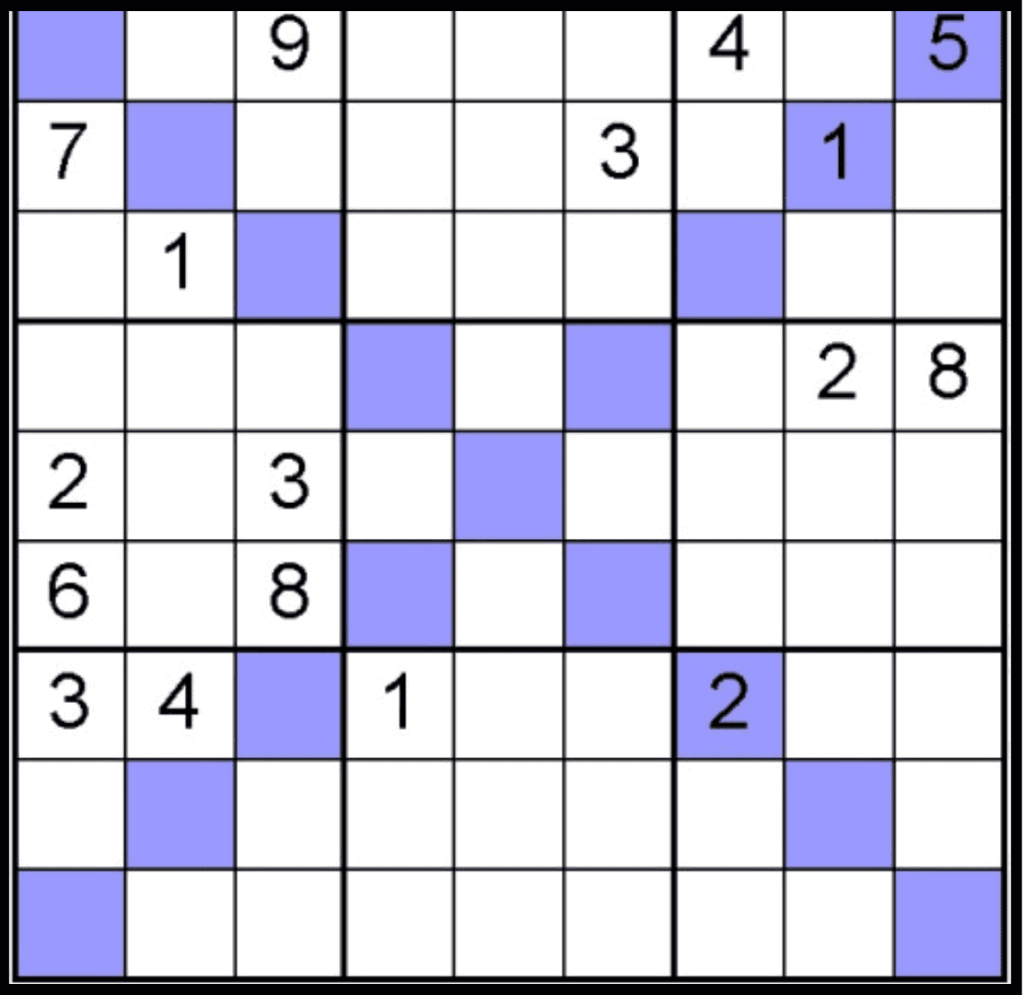
X-Sudoku, or Diagonal Sudoku, adds two diagonal lines to the standard 9×9 grid, each of which must contain the digits 1–9 without repetition. These diagonals, running from top-left to bottom-right and top-right to bottom-left, form an “X” shape, hence the name.
Rules
- Standard Sudoku rules apply: No repeated digits (1–9) in any row, column, or 3×3 box.
- Diagonal constraints: Both main diagonals of the grid must contain unique digits 1–9.
Why Play?
X-Sudoku is a delightful way to spice up the classic game without straying too far from its roots. The diagonals add an extra layer of logic, forcing you to consider new patterns while still feeling like the Sudoku you know and love. It’s perfect for players who want a fresh challenge but aren’t ready for the multi-grid or arithmetic complexities of other variants.
My Experience
I stumbled across X-Sudoku during a lazy Sunday puzzle session, and it quickly became a favorite. The diagonals make you rethink your approach, as a number placed in one corner affects not just its row, column, and box but also the diagonal. It’s like playing chess with an extra piece on the board—familiar but thrillingly different. I recommend starting with puzzles that have more given numbers to ease into the diagonal logic.
5. Jigsaw Sudoku (Irregular Sudoku): The Shape-Shifter
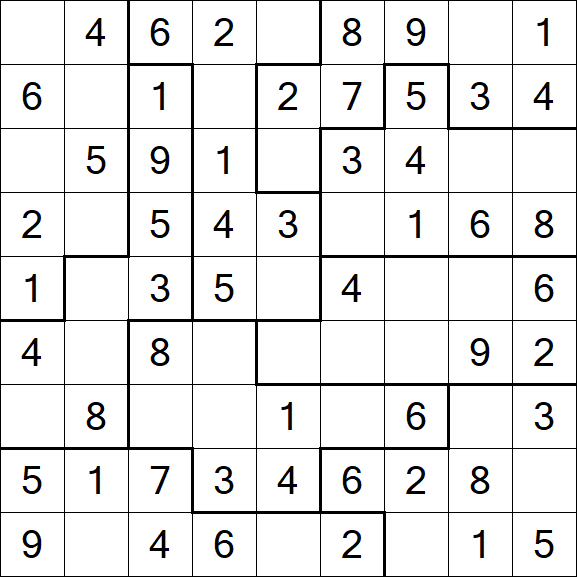
Jigsaw Sudoku, also known as Irregular Sudoku, replaces the standard 3×3 boxes with irregularly shaped regions, each containing exactly nine cells. These regions can take all sorts of forms—pentominoes, hexominoes, or other creative shapes—while still requiring the digits 1–9 without repetition.
Rules
- Standard Sudoku rules apply: No repeated digits (1–9) in any row or column.
- Irregular regions: Each uniquely shaped region (replacing the 3×3 boxes) must contain unique digits 1–9.
Why Play?
Jigsaw Sudoku is a visual and logical treat, offering a refreshing break from the standard grid. The irregular shapes force you to adapt your solving strategies, as the familiar 3×3 box patterns no longer apply. It’s a fantastic way to exercise your spatial reasoning and enjoy a puzzle that’s as beautiful as it is challenging.
My Experience
Jigsaw Sudoku feels like a piece of art you get to solve. The first time I saw those wonky shapes, I was both intrigued and a little nervous—where do you even start? But once I leaned into the logic, I found the irregular regions added a playful creativity to the process. It’s like solving a puzzle and a jigsaw at the same time. Pro tip: focus on the regions with the fewest empty cells first to gain traction.
6. Thermo Sudoku: The Temperature Twist
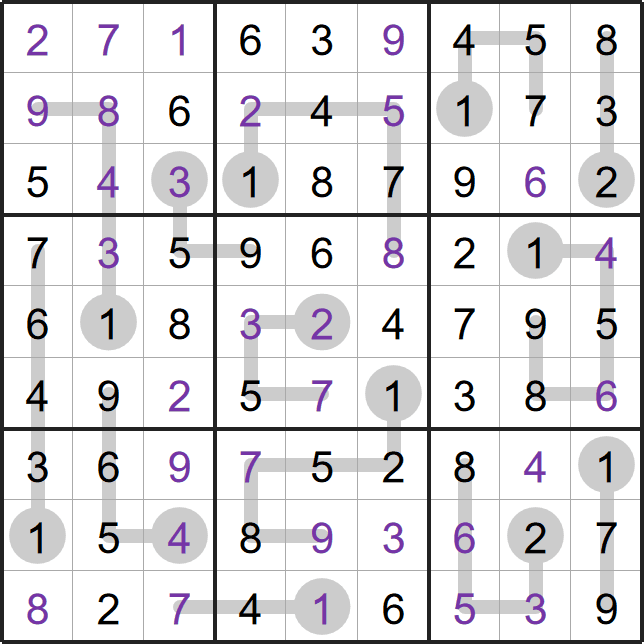
Thermo Sudoku introduces “thermometers”—sequences of cells that must contain digits in strictly increasing order from the bulb (base) to the end. These thermometers add a directional constraint to the standard 9×9 grid, creating a unique logical challenge.
Rules
- Standard Sudoku rules apply: No repeated digits (1–9) in any row, column, or 3×3 box.
- Thermometer constraints: Digits in each thermometer must increase strictly from the bulb to the end (e.g., 1-2-3 or 5-6-7).
Why Play?
Thermo Sudoku is a brilliant blend of logic and sequence, appealing to those who enjoy puzzles with a clear direction (literally!). The thermometers add a layer of constraint that feels intuitive yet demands careful planning. It’s a great way to practice ordered thinking and explore new solving techniques.
My Experience
Thermo Sudoku caught my eye with its quirky thermometer shapes, and it didn’t disappoint. The increasing-digit rule feels like following a path through the grid, and it’s surprisingly satisfying to watch the numbers climb. My biggest lesson? Pay close attention to the thermometers early on—they can lock in key digits and make or break your solution. It’s a puzzle that feels alive, guiding you through its logic like a story.
7. Palindrome Sudoku: The Mirror Puzzle
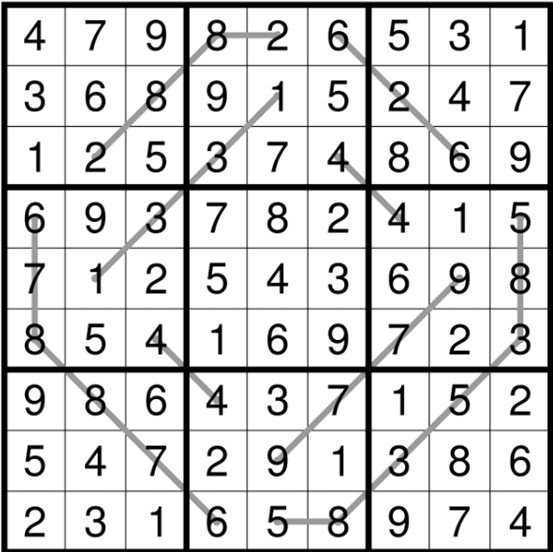
Palindrome Sudoku adds a literary twist to the grid by incorporating “palindrome” lines—sequences of cells that read the same forward and backward, like a numerical mirror (e.g., 1-2-3-2-1). These palindromic sequences must fit within the standard Sudoku constraints.
Rules
- Standard Sudoku rules apply: No repeated digits (1–9) in any row, column, or 3×3 box.
- Palindrome constraints: Designated sequences of cells must form a palindromic pattern (same digits when read forward or backward).
Why Play?
Palindrome Sudoku is a delightful mix of symmetry and logic, perfect for those who love patterns and balance. The palindromic sequences add a layer of elegance, requiring you to think about mirrored digits while solving the grid. It’s a great way to challenge your brain and appreciate the beauty of symmetry in puzzles.
My Experience
Palindrome Sudoku feels like solving a poem in numbers. The first time I tried it, I was charmed by the idea of digits mirroring each other across the grid. It’s less about brute force and more about finding the rhythm of the palindrome. My advice? Start by filling in the central digits of longer palindromes—they often anchor the puzzle and guide your next moves.
Comparison Table of Sudoku Variants
| Variant Name | Unique Feature | Difficulty Level |
|---|---|---|
| Killer Sudoku | Sum-based constraints | ★★★★☆ |
| Samurai Sudoku | Five interlinked grids | ★★★★★ |
| Hyper Sudoku | Additional 3×3 regions | ★★★☆☆ |
| X-Sudoku | Diagonal constraints | ★★★☆☆ |
| Jigsaw Sudoku | Irregular regions | ★★★★☆ |
| Thermo Sudoku | Increasing sequences | ★★★★☆ |
| Palindrome Sudoku | Symmetric number patterns | ★★★★☆ |
Why Try Sudoku Variants in 2025?
Sudoku variants are more than just puzzles—they’re mental adventures that push you to think differently. Each of these seven variants—Killer, Samurai, Hyper, X, Jigsaw, Thermo, and Palindrome—offers a unique flavor, from arithmetic challenges to multi-grid epics to symmetrical sequences. They’re perfect for keeping your mind sharp, sparking creativity, and providing hours of satisfying problem-solving.
In 2025, as our world grows ever more digital and fast-paced, these puzzles offer a chance to slow down, unplug, and engage with something timeless yet innovative. Whether you’re a seasoned solver or a curious newbie, there’s a variant here to ignite your passion for puzzles. My personal favorite? It’s a tie between Killer Sudoku’s math-logic combo and Jigsaw Sudoku’s artistic flair—but I’m still exploring, and I hope you will too.
Tips for Getting Started
- Start simple: Choose puzzles with more given numbers or simpler constraints to learn the variant’s logic.
- Use pencil marks: Jot down possible digits in cells to track your options, especially for complex variants like Samurai or Killer.
- Take breaks: These puzzles can be intense, so step away and return with fresh eyes if you’re stuck.
- Find resources: Websites like Sudoku.com or apps like Conceptis Puzzles offer a range of variants with adjustable difficulty.
So, what are you waiting for? Pick a variant, grab a pencil (or a stylus), and challenge your mind in 2025. Which one will you try first? Let me know in the comments—I’d love to hear about your puzzle adventures!
FAQs On Top Sudoku Variants
Q1: What is Killer Sudoku?
Ans: Killer Sudoku combines traditional Sudoku with an arithmetic challenge. Players fill a 9×9 grid so each row, column, and 3×3 box contains digits 1–9 without repetition. Additionally, outlined cages have sum requirements, and numbers within each cage must add up to the given total with no repeated digits.
Q2: How does Samurai Sudoku work?
Ans: Samurai Sudoku consists of five 9×9 grids arranged in a cross pattern with overlapping central 3×3 boxes. Each grid follows standard Sudoku rules (no repeated digits 1–9 in rows, columns, or boxes), and the shared cells must be consistent across connected grids.
Q3: What makes Hyper Sudoku different?
Ans: Hyper Sudoku, or Windoku, adds four extra 3×3 regions to the standard 9×9 grid. These regions, often in a cross or corner pattern, must each contain unique digits 1–9, alongside the usual row, column, and 3×3 box constraints.
Q4: What is X-Sudoku?
Ans: X-Sudoku, or Diagonal Sudoku, includes two diagonal lines (top-left to bottom-right and top-right to bottom-left) in a 9×9 grid. Both diagonals, along with rows, columns, and 3×3 boxes, must contain unique digits 1–9.
Q5: What is Jigsaw Sudoku?
Ans: Jigsaw Sudoku, also called Irregular Sudoku, replaces the standard 3×3 boxes with irregularly shaped regions of nine cells each. Rows, columns, and these unique regions must contain digits 1–9 without repetition.
Q6: How does Thermo Sudoku work?
Ans: Thermo Sudoku features “thermometers” on a 9×9 grid, where digits in each thermometer must increase strictly from the bulb to the end (e.g., 1-2-3). Standard Sudoku rules for rows, columns, and 3×3 boxes also apply.
Q7: What is Palindrome Sudoku?
Ans: Palindrome Sudoku includes sequences of cells that form palindromic patterns, reading the same forward and backward (e.g., 1-2-3-2-1). These sequences must fit within the standard Sudoku rules for rows, columns, and 3×3 boxes.
Q8: Why should I play Killer Sudoku?
Ans: Killer Sudoku enhances logical deduction and arithmetic skills by combining standard Sudoku with cage sum challenges, offering a satisfying blend of number crunching and strategic thinking.
Q9: What skills does Samurai Sudoku improve?
Ans: Samurai Sudoku improves endurance, spatial reasoning, and pattern recognition due to its multi-grid structure, requiring players to juggle five interconnected 9×9 puzzles simultaneously.
Q10: Is Hyper Sudoku harder than regular Sudoku?
Ans: Hyper Sudoku is moderately harder due to the addition of four extra 3×3 regions, which introduce new constraints while maintaining the familiar 9×9 grid structure.
Q11: Why is X-Sudoku called Diagonal Sudoku?
Ans: X-Sudoku is called Diagonal Sudoku because it adds two diagonal lines forming an “X” shape, each requiring unique digits 1–9, alongside standard Sudoku rules.
Q12: What makes Jigsaw Sudoku unique?
Ans: Jigsaw Sudoku’s unique feature is its irregular, puzzle-piece-like regions that replace the standard 3×3 boxes, adding a visual and logical twist to the classic game.
Q13: How do thermometers function in Thermo Sudoku?
Ans: In Thermo Sudoku, thermometers are sequences of cells where digits must increase from the bulb to the end, adding a directional constraint to the standard Sudoku rules.
Q14: What is the appeal of Palindrome Sudoku?
Ans: Palindrome Sudoku appeals to players who enjoy symmetry and patterns, as its palindromic sequences (e.g., 1-2-3-2-1) add an elegant, mirrored logic to the puzzle.
Q15: How can beginners start with Killer Sudoku?
Ans: Beginners should start with Killer Sudoku puzzles that have smaller cages (e.g., sums of 3 or 4) and more given numbers to learn the interplay between cage sums and standard Sudoku rules.
Q16: Is Samurai Sudoku suitable for beginners?
Ans: Samurai Sudoku is best for experienced players due to its complex, multi-grid structure. Beginners can try it with simpler puzzles and focus on the central grid first.
Q17: Where can I find Hyper Sudoku puzzles?
Ans: Hyper Sudoku puzzles are available on websites like Sudoku.com, puzzle apps like Conceptis Puzzles, or in specialized Sudoku books with variant collections.
Q18: How do I solve X-Sudoku efficiently?
Ans: To solve X-Sudoku efficiently, track the two diagonals alongside rows, columns, and boxes, and use pencil marks to note possible digits, especially for cells on both diagonals.
Q19: What tools help with Jigsaw Sudoku?
Ans: Pencil marks are key for Jigsaw Sudoku to track possible digits in irregular regions. Focusing on regions with fewer empty cells can also help beginners gain traction.
Q20: Are there apps for Thermo Sudoku?
Ans: Yes, apps like Cracking the Cryptic and Conceptis Puzzles offer Thermo Sudoku, often with adjustable difficulty levels to suit both beginners and experts.
Q21: How do I approach Palindrome Sudoku?
Ans: Start with the central digits of palindromic sequences, as they anchor the pattern, and ensure they align with the standard Sudoku constraints for rows, columns, and boxes.
Q22: Which Sudoku variant is the easiest for beginners?
Ans: X-Sudoku or Hyper Sudoku are great for beginners, as they add only one or two new constraints to the familiar 9×9 grid, making them easier to learn than multi-grid or arithmetic variants.
Q23: Can Sudoku variants improve brain function?
Ans: Yes, Sudoku variants like Killer, Thermo, and Palindrome Sudoku enhance logical reasoning, pattern recognition, and problem-solving skills, keeping your brain sharp.
Q24: Where can I find free Sudoku variant puzzles?
Ans: Free Sudoku variant puzzles are available on websites like Sudoku.com, PuzzleMadness, and apps like Sudoku by Brainium, often with daily challenges and variant options.
Q25: Why are Sudoku variants popular in 2025?
Ans: Sudoku variants are popular in 2025 for their creative twists on the classic game, offering fresh challenges that appeal to both new and seasoned solvers in a fast-paced, digital world.
Final Thoughts On Top Sudoku Variants
Sudoku enthusiasts seeking fresh challenges in 2025 have plenty of exciting variants to explore. Whether you enjoy arithmetic constraints, extended grids, or unique symmetry-based logic, there’s a perfect Sudoku variant for you.
Try these puzzles online or in puzzle books, and keep pushing your logical thinking skills to new heights!
SwetaMS is the founder and editor of Sudoku Times, a leading blog dedicated to Sudoku puzzles, logical reasoning, and brain training. With a deep passion for analytical thinking and problem-solving, Sweta curates engaging Sudoku challenges, expert solving techniques, and thoughtful insights for puzzle enthusiasts of all levels.

Pingback: Cognitive Benefits of Sudoku-2025 Study Insights - Sudoku Times
Pingback: Sudoku in Pop Culture: How This Logic Puzzle Conquered Movies, Books, and TV Shows